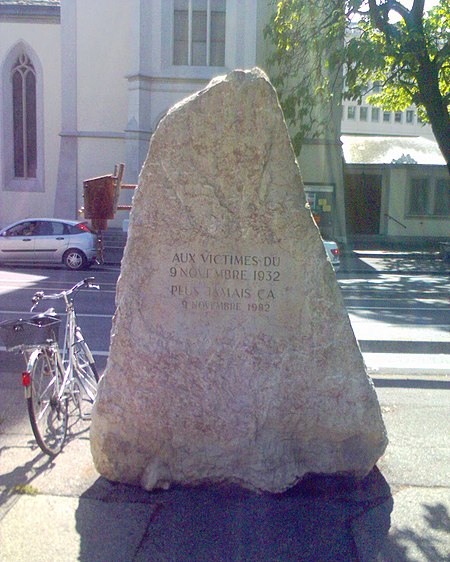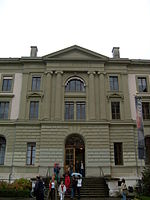November 1932 Geneva shooting

On 9 November 1932, elements of the Swiss Army under Major Perret fired live rounds into a crowd of anti-fascist protesters in Plainpalais in Geneva, killing 13 and wounding 65.The shooting occurred on a background of increasing violence between far-right and far-left groups, of rising totalitarian regimes, and of unemployment and economic crisis in Europe. The incident stemmed from inappropriate crowd control tactics, excitation of the antimilitarist protesters after a speech by socialist leader Léon Nicole, a series of incompetent orders, and a force made up of improperly trained officers and soldiers — who had only had six weeks of military training before their deployment. Exactly how events unfolded and who bears responsibility for them are still a matter of debate.A commemorative monument was unveiled on 9 November 1982 for the 50th anniversary of the shooting on the Southern end of Plainpalais, near the place of the events. On 10 September 2008, the State Council of Geneva authorised the monument to be moved in front of the University of Geneva, on the exact spot of the shooting.
Excerpt from the Wikipedia article November 1932 Geneva shooting (License: CC BY-SA 3.0, Authors, Images).November 1932 Geneva shooting
Rue Hugo-de-Senger, Geneva Plainpalais
Geographical coordinates (GPS) Address Nearby Places Show on map
Geographical coordinates (GPS)
| Latitude | Longitude |
|---|---|
| N 46.193889 ° | E 6.141389 ° |
Address
Rue Hugo-de-Senger 5
1200 Geneva, Plainpalais
Geneva, Switzerland
Open on Google Maps





